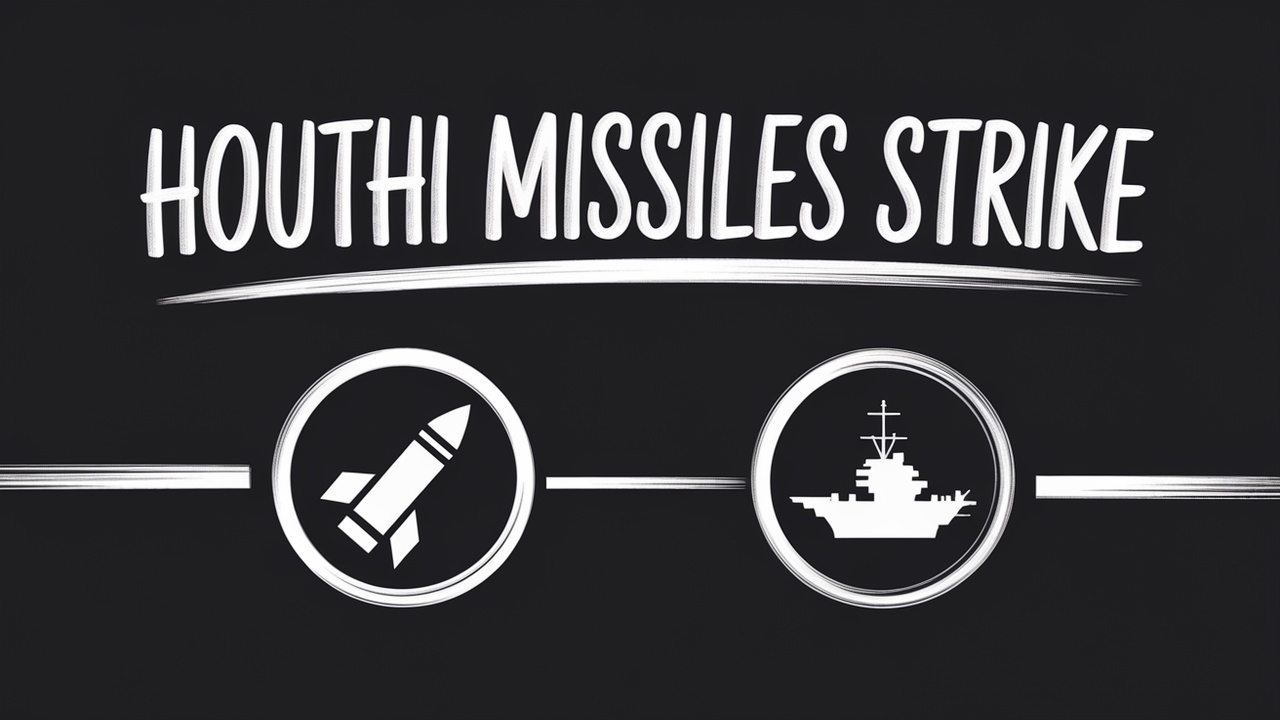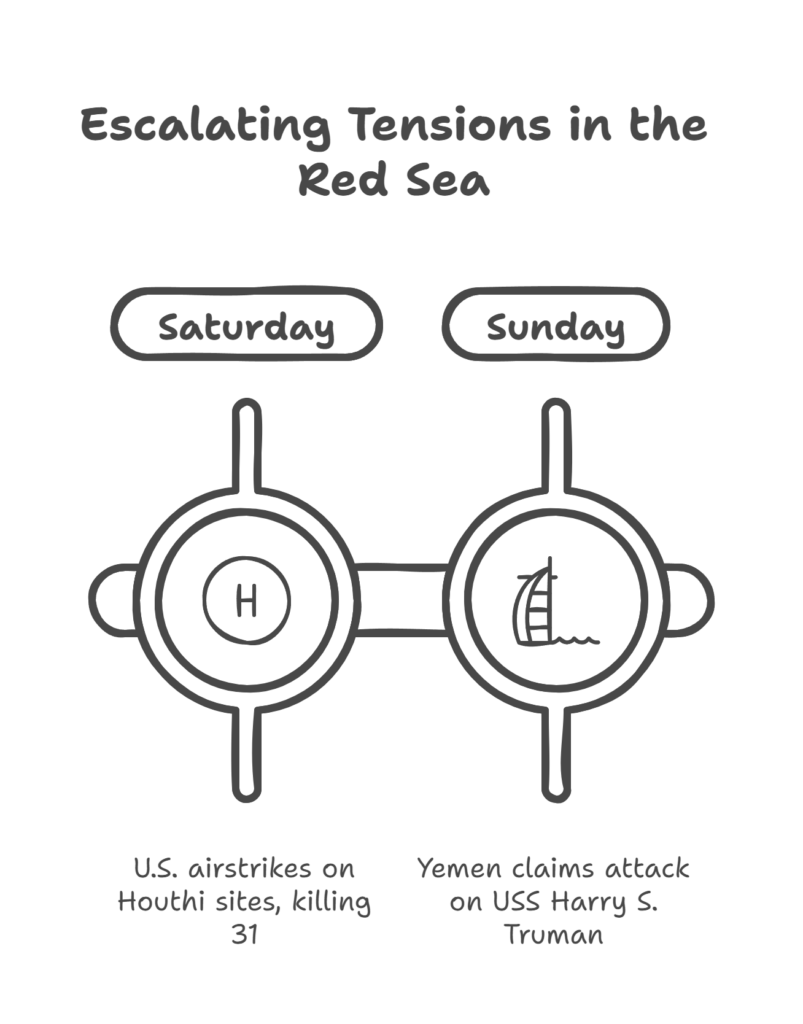Yemeni Army Claims Attack on U.S. Carrier in Red Sea
The Yemeni Armed Forces, tied to the Houthi movement, claimed they attacked the U.S. aircraft carrier USS Harry S. Truman in the Red Sea on March 16, 2025, near Yemen’s coast.

Military spokesperson Yahya Saree said the strike used 18 ballistic and cruise missiles plus a drone. The move came as retaliation for U.S.-led airstrikes on Yemen the day before, escalating tensions in the region.
Yemen’s military made a bold claim Sunday. They said they hit a U.S. aircraft carrier in the Red Sea. The target? The USS Harry S. Truman, a key Navy asset. The attack, if true, marks a sharp escalation. It follows U.S. strikes on Houthi sites Saturday that killed at least 31 people, per Yemen’s Houthi-run Health Ministry. The Red Sea, a vital trade route, is now a hotspot in this growing conflict.
Missiles and Drones in Play
Details from Yemen paint a big picture. Saree, the Houthi military voice, said the attack used 18 missiles—both ballistic and cruise—plus one drone. He claimed it forced the carrier to retreat north toward Egypt’s Suez Canal. “We hit the USS Harry S. Truman and its escorts,” Saree said on Al-Masirah TV, a Houthi channel. The strike, he added, stopped a U.S. air raid on Yemen. No U.S. official has confirmed the claim yet. The Pentagon stayed silent Sunday night. Earlier reports from December 2024 noted the carrier faced Houthi drones, but U.S. forces shot them down. This time, the scale sounds bigger.

Why Now? The Backstory
The Houthis, backed by Iran, have a grudge. Since October 2023, they’ve hit ships in the Red Sea to support Palestinians in Gaza. They’ve sunk two vessels, seized one, and killed crew members. The U.S. and allies stepped in with Operation Prosperity Guardian in 2024 to guard shipping lanes. Saturday’s U.S. strikes hit seven Yemeni regions, targeting Houthi leaders, the White House said. That sparked this response. President Donald Trump, in office since January 2025, warned of “overwhelming lethal force” against the Houthis. He blames Iran too. The Red Sea’s 40 million yearly container ships—70% U.S.-linked—make it a prime target.
Tensions Boil Over
This isn’t the first clash. The Houthis claimed five attacks on the Truman since it arrived in the Red Sea late 2024. U.S. Central Command (CENTCOM) often calls these bluff, saying drones and missiles get downed. But Sunday’s claim ups the ante with missiles. Analysts see a pattern. The Houthis hit back after every U.S. strike. Last week, they resumed attacks on Israeli ships after a Gaza aid cut. Meanwhile, U.S. jets and ships keep pounding Houthi sites. Secretary of State Marco Rubio vowed more action Sunday, saying strikes will go on. Yemen’s defiance could test Trump’s resolve.
The Red Sea’s stakes are high. Shipping firms like Maersk detour around Africa, adding weeks and millions in costs. Consumers feel it—prices for goods could climb. The Houthis show no quit. Saree warned all U.S. warships are “legitimate targets” now. Panama Canal deals pale next to this chaos. If the carrier took a hit, it’d be a rare blow to U.S. naval power. But without proof, it’s just words—for now.
Conclusion: What’s Next for the Red Sea?
This clash could shift the game. If Yemen’s claim holds, the U.S. might hit back hard. Trump’s team hints at punishing Iran too. But if it’s hype, the Houthis still win by rattling nerves. The Red Sea stays a powder keg. Shipping faces delays, costs rise, and lives hang in balance. Next steps hinge on U.S. response. Will Trump escalate? Will Yemen double down? Proof of the attack—or lack of it—drops soon. Either way, this fight’s far from over.